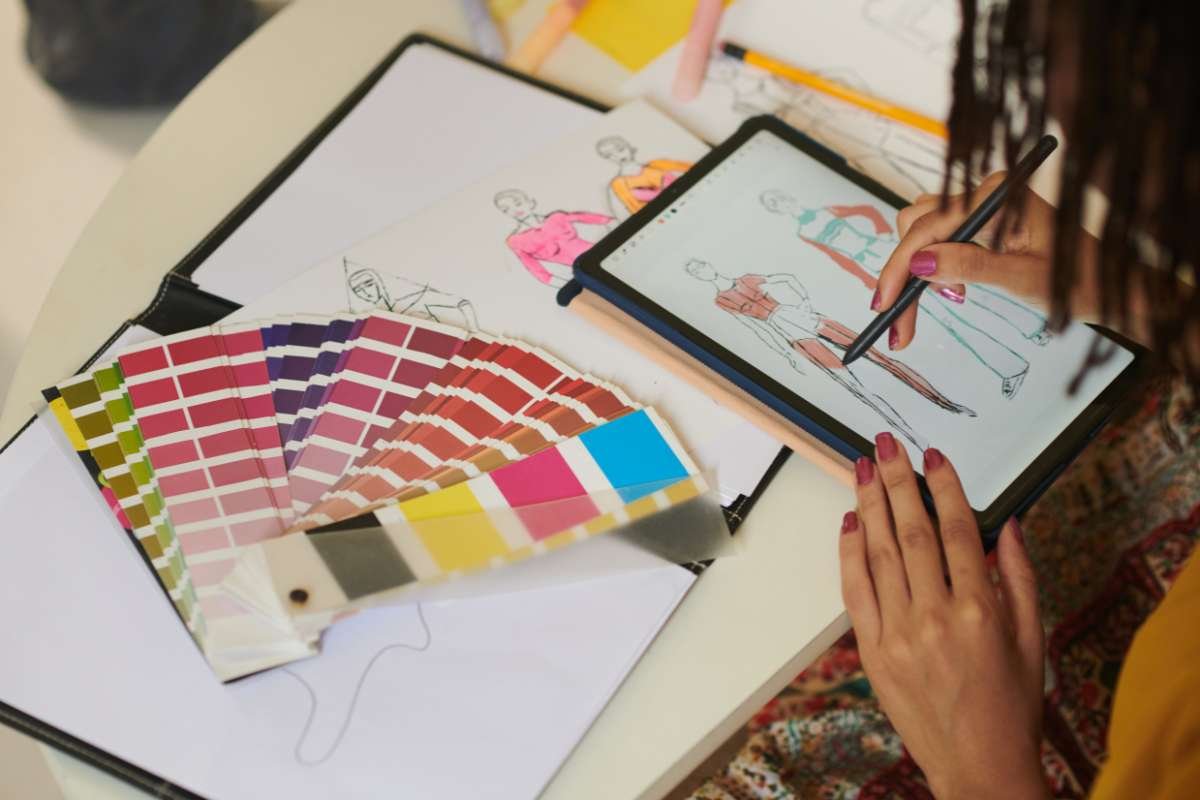Fashion is much more than the flash and flair it presents; it’s an industry that evolves at a fast pace and is constantly shifting based on new trends, technologies, and appeals of consumers. For creative individuals with a sense of style, as a fashion designer, there are a variety of paths you can take. From haute couture to sustainable fashion, the fashion industry is teeming with possibilities if you’re willing to be a pioneer. This article looks at the various career opportunities in fashion designing, navigating the prospects for aspiring designers and people who simply love style.
Why Choose a Career in Fashion Design?
Fashion is a universal language. It reflects culture, identity, and innovation. Choosing fashion design as a career means stepping into an industry that blends art, commerce, and technology. Beyond runway shows and luxury brands, fashion influences everyday life—what people wear to work, to parties, even to the gym. A career in fashion design allows individuals to turn their passion into a purpose while also offering considerable room for growth and recognition.
Additionally, the fashion industry contributes significantly to global employment. According to McKinsey & Company’s “The State of Fashion” report, the fashion sector employs over 300 million people worldwide. This makes it not only a creative field but also one with considerable job stability, especially for those who stay ahead of trends and upskill regularly.
Educational Pathways and Skillsets Required
Before exploring career opportunities in fashion designing, it’s essential to understand the academic and practical groundwork needed. Most successful designers start with a formal education—a diploma, undergraduate, or master’s degree in fashion design or related fields like textile design, visual arts, or fashion communication.
Key skills required include:
- Creativity and Innovation: Fashion is ever-evolving. New ideas, unique designs, and bold statements can set a designer apart.
- Technical Proficiency: Knowledge of fabrics, patterns, tailoring, and computer-aided design (CAD) software is crucial.
- Market Awareness: Understanding consumer behavior, fashion cycles, and global trends helps create commercially viable designs.
- Communication and Networking: Building relationships in the fashion world is essential, from suppliers and manufacturers to clients and media.
- Business Acumen: Freelancers and brand owners especially need to understand pricing, production, marketing, and retail strategies.
Top Career Paths in Fashion Design
Let’s now delve into some of the prominent career opportunities in fashion designing:
1. Fashion Designer
This is the most obvious and coveted role in the industry. Fashion designers conceptualize clothing and accessories, select materials, and oversee production. They may work for established labels, start their own brands, or operate as freelancers. The work involves keeping an eye on trends, sketching ideas, creating samples, and participating in fashion shows or trade fairs.
2. Fashion Illustrator

A fashion illustrator is responsible for turning design ideas into detailed visual representations. These illustrations are used in portfolios, advertising, and presentations. While many illustrations today are digital, traditional sketching remains valuable in early design stages.
3. Textile Designer
Textile designers create patterns and fabric designs that serve as the foundation for garments. They work with various materials—cotton, silk, synthetic fabrics—and are heavily involved in the technical aspects of printing and weaving. Their work finds application in both apparel and interior décor.
4. Fashion Stylist
Stylists curate looks for photoshoots, fashion shows, celebrities, and ad campaigns. They mix and match garments, select accessories, and collaborate closely with designers, photographers, and makeup artists. Strong knowledge of current trends and brands is crucial in this role.
5. Fashion Merchandiser
A fashion merchandiser acts as the bridge between design and sales. They analyze market trends, forecast demands, and help brands decide what to produce and stock. This role is perfect for individuals who blend analytical thinking with a passion for style.
6. Costume Designer
From period dramas to sci-fi blockbusters, costume designers play a vital role in bringing characters to life. Working for theatre, film, or TV, they research historical attire, design character wardrobes, and often work within tight timelines and budgets.
7. Fashion Entrepreneur

Many designers dream of launching their own labels. While this path offers creative freedom and potential high returns, it also involves managing production, marketing, finances, and customer relations. Success here depends as much on business skills as it does on creativity.
Emerging Trends Shaping Fashion Careers
The landscape of career opportunities in fashion designing is being redefined by several emerging trends:
- Sustainable and Ethical Fashion: There’s growing demand for designers who create environmentally-friendly and ethically produced garments. Careers in eco-fashion, recycling design, and slow fashion are on the rise.
- Fashion Technology: From 3D printing to AI-generated designs, technology is revolutionizing how fashion is conceived and manufactured. Roles like fashion tech developer and digital fashion designer are gaining traction.
- Virtual and Augmented Reality: The rise of metaverse fashion and virtual runway shows offers new arenas for designers to showcase digital-only collections.
- Inclusive and Adaptive Fashion: Designers are increasingly creating apparel for diverse body types, abilities, and gender identities—opening doors for specialization in inclusive fashion.
- Fashion Blogging & Influencing: With social media’s influence, fashion content creators who build a strong personal brand can collaborate with major labels, attend events, or even launch their own fashion lines.
You Must Read: Iconic 8 Fashion’s Powerhouses: Famous Female Fashion Entrepreneurs
How to Build a Successful Career?
To truly thrive in the world of fashion, aspiring professionals must do more than just secure a job. Here are a few strategies for long-term success:

- Build a Strong Portfolio: Whether applying for jobs or pitching to clients, a portfolio showcasing your best work is essential.
- Intern and Network: Experience matters. Internships not only teach the trade but also help build valuable connections.
- Stay Updated: Subscribe to fashion magazines, follow industry leaders, and regularly update your skills.
- Attend Fashion Weeks and Trade Shows: These events are great for learning, networking, and exposure.
- Use Social Media: Platforms like Instagram, Pinterest, and LinkedIn can be used to showcase work, attract clients, and engage with industry peers.
Conclusion:
The variety of career opportunities in fashion designing is broad and ever-growing. Every suggestion of couture to analyzing metrics data in fashion retail has a niche for every talent. The most important element in this respect is your curiosity (and certainly adaptability!). Most importantly, persistence. With fashion continually evolving, those individuals who evolve with it will find fulfilling careers, creative satisfaction, and endless possibilities. So, wherever you find yourself today, whether it’s creating designs and fashion week in Paris or identifying consumer insights, you can be confident that the industry is your runway- walk it full of confidence and creativity and an amazing sense of style! .









